|
Germany breaks a daily record for renewable energy, generating 85% of its power from renewable sources on April 30.
FUTURISM — The country expects such days to become the norm as it continues its push toward clean energy adoption. A GREENER GERMANY In this age of rampant global warming, the term “record-breaking” has started to sound a bit like…well…a broken record. 2016 delivered month after month of record-breaking temperatures, and the year as a whole was the latest in a series of record-breaking years. We’ve recently shattered records for rising sea levels, elevated ocean temperature, and carbon dioxide levels, and many of these trends continue to move in the wrong direction. Thankfully, we also have some positive climate-related achievements to celebrate, the latest of which is courtesy of Germany, which just set a new national record for renewable energy. On April 30, 85 percent of the electricity consumed by the European nation was generated by renewable sources like wind, solar, and hydroelectric power. “Most of Germany’s coal-fired power stations were not even operating on Sunday, April 30,” Patrick Graichen of the Agora Energiewende initiative told Renew Economy. THE NEW NORMAL Though noteworthy right now, Graichen expects days like April 30 to be “completely normal” by 2030 due to Germany’s firm commitment to clean energy. Indeed, that commitment compelled National Geographic to call Germany “a leader” in the energy revolution amongst large industrial nations, and it’s easy to see why. By 2030, the nation hopes to have banned combustion engines altogether and, by 2050, it plans to have its carbon emissions at just 20 percent of 1990’s levels. However, Germany’s not the only country setting a good example for the rest of the world. In 2015, Canada used renewable sources to meet 66 percent of its energy needs, and Spain, Costa Rica, and the United Arab Emirates are all making remarkable strides to end dependence on fossil fuels. Ninety percent of the new energy sources added to Europe’s power grid in 2016 were renewable, signaling the entire continent’s commitment to clean energy, and even the poorest nations in the world have pledged to transition to renewables. Thanks to the initiatives of Germany and other like-minded nations, we may one day find ourselves living in a world in which every climate-related broken record is worthy of celebration.
0 Comments
It has atrocious air pollution. It fears climate change. And it wants to be a "manufacturing monster" in renewables too.
NATIONAL GEOGRAPHIC — The squares of silicon are hardly thicker than sheets of paper, each about six inches by six, with narrow stripes of silver. They come into the factory by the thousands, stacked in cardboard boxes, and within hours, they’ll be ready to leave again. The squares are solar cells, and in this plant two hours’ drive from Shanghai, workers in bright blue uniforms and white lab coats run the machines that assemble them, row by row, into more familiar-looking panels, ready to be installed on rooftops or in large arrays and begin turning sunlight into electricity. Chinese manufacturing has changed the economics of renewable power around the world, making solar generation cost-competitive with electricity from fossil fuels like natural gas and even coal. It has brought change closer to home too, as China rolls out the world’s biggest investment in clean energy—motivated in part by a desire to ease the atrocious air pollution that kills an estimated 1.1 million of its people every year. “The installation rates are absolutely mind-blowing,” says Lauri Myllyvirta, an energy and air pollution expert at Greenpeace in Beijing. China added 35 gigawatts of new solar generation in 2016 alone. “That’s almost equal to Germany’s total capacity, just in one year,” Myllyvirta says. Every hour, China erects another wind turbine and installs enough solar panels to cover a soccer field, according to Greenpeace estimates. Beyond Coal After years of ignoring the air quality crisis that has resulted from decades of breakneck industrialization, China’s leaders have finally begun trying to solve it. And because coal is the source of an estimated 40 percent of the most dangerous pollution particles in the country’s air , finding alternatives to it has become a crucial priority. China aims to get 20 percent of its energy from renewable sources by 2030, and it recently announced it would spend $360 billion on the effort in just the next three years. In the Yangtze River Delta, a region known for its economic dynamism, Jinko Solar is one of the companies that has sprung up to meet that demand. It exports its solar equipment too, to the United States, Europe, Latin America, the Middle East and elsewhere. Last year, it produced panels with an electricity-generating capacity equivalent to about 10 typical coal-fired plants. Here in Haining, the factory floor is clean and bright, and a low whoosh is the only noise as red, robotic arms lift and twist, moving the panels from one station to the next. Workers, some in white masks that cover their faces and heads, others sporting colored baseball-style caps, test and tweak as layer is added to layer and the parts are sealed together into ready-to-go modules, wires dangling from a small black box mounted on the back. Air pollution isn’t the only reason China is so serious about renewables, but it’s a powerful one. And it was a big part of what put President Xi Jinping in a position to announce, in a landmark 2014 deal with President Obama, that China’s emissions of planet-warming carbon dioxide would peak around 2030, a pledge that became the centerpiece of its commitments under the Paris climate agreement.It appears now to be ahead of schedule in meeting that goal. Official figures can be unreliable, but they show that coal consumption, the main driver of China’s carbon emissions, fell in 2016 for the third straight year. And because China has clearly decided that cutting coal use—the fuel powers much of its heavy industry as well as providing electricity— is in its own interest, it’s a trend that’s likely to continue even as the United States, under President Trump, abandons Obama’s climate agenda. Because China accounts for half the world’s coal consumption, that’s good news not just for the health of those who must breathe its air, but also for the wider effort to check runaway global warming. “I think it’s fair to say that it wouldn’t have happened as fast and with as little resistance as it has if it hadn’t been for the air pollution motivation,” Myllyvirta says. “It’s really hard to argue against when you’re sitting in Beijing,” breathing its toxic air. Kinks in the Grid The renewables rollout has not been without its troubles. Vast fields of wind turbines have been erected in the country’s sparsely populated northwest, far from the big cities where electricity is most needed, and the construction of transmission lines to move all that power has failed to keep up. “They set up these huge wind farms and they don’t have connections to the grid,” says Antung Liu of Indiana University Bloomington. “They just have this attitude that ‘We’ll build it, and hopefully we’ll be able to use it later.’” What’s more, grid operators have shown a bias toward coal production, so renewable power has sometimes gone unused even when the physical connections are there. Greenpeace estimates that 19 percent of Chinese wind power was wasted in the first three quarters of last year. Leaders are now starting to reckon with those issues, installing new power lines and focusing on building smaller wind and solar farms in populated areas. Not far from Jinko’s factory, another arm of the company operates just such an array. Inside rows of long, low buildings, a new season’s crop of mushrooms are about to be planted. They don’t need sunlight, so the greenhouse roofs have been given over to solar panels. Nearly 19,000 of them, mounted in rows overhead, generate electricity that is fed into the grid. At first, China’s effort “was only about getting the gigawatts up,” says Jukka-Pekka Mäkinen, CEO of The Switch, a Finland-based company manufacturing wind-power components in China. “Now it’s keeping up the gigawatts, but doing it much smarter, and focusing in areas where the consumption is.” Despite such efforts, China is also still building coal-fired power plants, in part because of an incentive structure that encourages provincial officials to green-light unnecessary construction, even as the central government seeks to push cleaner options. But officials have also begun cancelling some that are already in the planning pipeline, aware that China already has more coal-fired power generation than it needs. A Manufacturing Monster It’s not just pollution that’s driving the determined focus on renewable power. Leaders have made clear that they view clean energy as a powerful engine for job creation. “It’s about setting up for manufacturing dominance,” Liu says. “China sees green energy as an opportunity where it can become a manufacturing monster the way it has in clothes and toys.” Whatever the motivation, the consequences of China’s clean energy buildup are already clear. Wealthier nations that once used China as an excuse for their own inaction are now watching it zoom past them to become a global climate leader. “Everybody was saying ‘China didn’t sign the Kyoto agreement,’” the 1997 climate deal, Mäkinen recalls. “So what? They did more than everybody else put together.” Falling prices for renewables and a growing sustainability movement from the bottom up have changed the global picture.
NATIONAL GEOGRAPHIC — If ever there was a symbolic moment when the past met the future, it arrived as the Kentucky Coal Mining Museum announced in April it is converting to solar. To save money. Coming from Harlan County, a place so deeply imbued with mining that coal has been considered its lifeblood for more than a century, the news immediately went viral. Tre’ Sexton, owner of Bluegrass Solar, was so stunned by the museum’s request, he told USA Today ”it would be like showing up at a bank and they ask you if you’d mind taking some of this money out of the vault.” The numbers on coal-versus-solar are as clear as day. Eighty solar panels on the museum’s roof saves almost $10,000 on the yearly electric bill. The museum’s switch is also another sign post, although a profoundly ironic one, that the global transition to a lower-carbon future is well underway—and will not reverse course, no matter how President Donald Trump redesigns Washington’s role in fighting climate change. Less than two years after 195 countries agreed in Paris to curb emissions to avoid a two-degree Celsius rise in temperature, the switch to clean energy is happening far faster than anyone expected, according to a new analysis unveiled this week in Europe. Dramatic change is taking shape in the three countries that need it most—the United States and the expanding economies of China and India. It’s even happening in the face of Trump administration rollbacks of Obama-era climate regulations. "Our analysis shows China and India are massively overachieving," says Niklas Höhne, a climate expert in The Netherlands, and the founder ofNewClimate Institute, a research organization. "The positive effects in China and India are far larger than the negative impacts coming out of the United States." That doesn’t mean that Trump can’t make a big impact—especially if he walks away from the Paris accord, as he promised during his campaign. His presence is already being felt. But as the world watches to see if or how far the U.S. steps back from its leadership role, here are some takeaways to keep in mind: 1. SOLAR AND WIND ARE CHEAPER THAN COAL Solar and wind are now so competitive that they are crowding out coal in many countries. In the U.S., electric generation from coal dropped by more than half in the last decade. Utility scale solar, meanwhile, rose 5,000 percent during that same period—increasing by half just from 2015 to 2016. In fact, Trump's first 100 days coincided with wind power's best quarter in eight years. Globally, fossil fuels are still dominant. But new electricity generation from renewables in 2015 for the first time was greater than the amount of new power generation from coal or oil. The pace is quickening because the transition is now driven by economics—not just politics. While President Trump promised to put coal miners back to work, more than 250 coal plants, half the number operating in the U.S., already have plans to close or shift to cleaner fuels. Obama-era regulations didn’t do that. In fact, with President Obama's rules to force coal-fired power plants to clean up emissions, the Energy Information Administration calculated that electricity generation from renewables and natural gas would surpass coal by 2028. But even without those rules, the transition could occur as soon as 2029. 2. CORPORATE AMERICA IS ON BOARD Some of the largest U.S. companies have urged Trump to stay in the Paris agreement, including Dupont, the chemical company, and General Motors, which has pledged that 100 percent of the electricity it uses at 350 plants in 59 countries would be powered by renewables by 2050. Apple and Google are among 19 mostly tech firms that bought a full-page ad in the New York Times to argue the case. But the voices that count are leaders in the fossil fuel industry, who have Trump’s ear. Many of them, including Cloud Peak, one of the U.S.'s largest coal companies, and Big Oil, including ExxonMobil, Royal Dutch Shell, Chevron, and BP, are urging Trump to stay in Paris. “What matters are the big, coal-fired electric utilities on the front line,” says David Victor, an international relations professor at the University of California, San Diego, and author of Global Warming Gridlock. “They are all continuing forward with a program of reducing emissions over time. More natural gas, less coal, more renewables. That’s the investment pattern inside the industry, because the investment cycle is much longer than winds that shift this way or that in Washington.” 3. STATES AND CITIES ARE STEPPING UP Meanwhile, states and cities have stepped into the void left by Washington gridlock. Some 29 states now require a percentage of their electricity to come from renewable sources, according to the National Conference of State Legislatures. Among them, Massachusetts, New Hampshire, Minnesota, and New York plan to cut emissions 80 percent by 2050. California aspires to some of the most ambitious goals—cutting greenhouse gases by 40 percent in the next 13 years. The Golden State wants to lead the nation's push to electrify transportation. It is calling for significant investment in weatherization and retrofitting buildings to be more energy-efficient. The state is even overlaying climate targets on land-use decisions—incentivizing local and regional agencies to reduce the need for cars. More than two dozen cities have adopted measures that go even farther. They committed to generating 100 percent of their electricity from renewable energy in the coming decades. That’s not just blue-state coastal cities, but also municipalities in the interior, places like Hanover, New Hampshire and Moab, Utah. Likewise, cities across the country are upgrading water treatment plants, raising flood walls, and rewriting building codes as they adapt to harsher weather conditions and tidal flooding. "What's going on in state and local governments is really happening on two fronts—emissions reductions and adaptation," says John Holdren, former top science adviser to President Obama. "Both thrusts are absolutely essential." 4. IT’S NOT JUST BLUE STATES AND TREE-HUGGERS Nine of the 10 states that get the largest proportion of their electricity from wind—including Iowa, Kansas, and both Dakotas—are Republican-leaning. Always at or near the top: The GOP stronghold of Texas. "Republican states are going for wind because the cost is so cheap," says Mark Jacobson, a Stanford University professor and clean energy expert. In the coal state of Wyoming, Republican Gov. Matt Mead is ever the pragmatist. He doesn’t argue that CO2 is not harmful. He focuses on the future. As the world embraces new rules requiring reductions in carbon dioxide, he wants Wyoming to lead in finding ways to capture emissions and transform them into safe, marketable consumer goods. He hopes that will give coal a longer lifespan. Wyoming was among the first states to invest in research in so-called carbon-capture and storage. Officials hope a site in Rock Springs could serve as a test case for underground CO2 storage. The legislature also spent millions of dollars to build a test facility in Gillette. They hope scientists will experiment on emissions pulled straight from a coal-fired power plant and learn to neutralize the CO2 and turn it into products from carbon fiber to toothpaste. "I think we've gotten bogged down in this discussion," Mead says. As the nation's leading energy exporter, "I feel we have a responsibility to lead in research and innovation." 5. THE INFLUENCE CENTER SHIFTS FROM WASHINGTON TO SACRAMENTO California’s 40 million people produce one percent of global emissions. But this tech-industry capital, the world’s sixth largest economy, drives investment and innovation for everything from batteries to solar panels, pushing down prices for renewables. It also incubates ideas. The state has adopted dozens of laws and rules that serve as templates for cities, other states, even countries. And with low unemployment—currently below 5 percent—California also gets to boast that curbing greenhouse gases doesn't bust the economy. What happens when California flexes its muscle? For one thing, legislation it passed 15 years ago is the key reason motor vehicle gas mileage rates nationwide keep improving. After it agreed to set greenhouse gas rules for cars and trucks in 2002, a dozen states adopted those standards. When President Obama bailed out the automobile industry, he wrangled more mileage concessions, essentially nationalizing California's approach. Later, auto companies accepted one national standard: on average, vehicles across fleets would achieve 54.5 miles per gallon by 2025. This clout may be a check against some Trump policies. The auto industry asked Trump and Environmental Protection Agency chief Scott Pruitt to revisit mileage standards. The White House has said it would. But California officials promise to push back. And car manufacturers don’t want two sets of rules—one for California and one for the rest of the nation. “By the time it’s worked out, there will be a new president,” says Victor, the University of California, San Diego, professor. “The question for industry, and automakers planning new vehicles, is: Do you want to bet that the change in policy under Trump is permanent? That’s the bet that most people are not willing to make.” 6. A BRIGHTER GLOBAL PICTURE Falling prices of renewable energy have dramatically improved the global outlook. Just two years ago in Paris, the world's top two polluters outside the U.S. insisted they’d need lots more coal. That was especially true in India, where millions in rural villages still live without electricity. Today, entire regions across India are seeking 100 percent renewable power. India's new plans for meeting future energy needs now call for far fewer coal-fired plants. China, too, is shuttering coal facilities. Coal consumption there has dropped three years in a row. In both countries, according to Hohne’s team, the changes appear likely to slow emissions growth by 2030 far more than projected during the Paris talks. "This is truly a surprise," Hohne says. 7. BUT, THE U.S. NEEDS TO DO MORE Progress toward reducing emissions is fraught with peril. Many scientists concede that goals set in Paris aren’t strong enough to avoid the worst climate consequences. There’s still no guarantee the world will even meet them. For that to happen, many say, much more needs to happen—and faster—in the U.S. Even if Trump kept all of Obama’s plans, the U.S. would fall short of its own target of reducing emissions by 26 to 28 percent below 2005 levels by 2030. Obama’s strategy always relied on the U.S. ratcheting emissions down more in coming years. If Trump abandons those plans, the U.S. will almost certainly fall dramatically short–in spite of the efforts of states, cities, and corporations. "When the Obama administration put out its goal it was very clear that it would be a stretch," says Kate Larsen, who worked on climate policy in the Obama White House, and is now a director at the research organization Rhodium Group. "And that was with the full-force of the federal government behind it. "I think we need to be honest about where we are and where we need to be without demoralizing people," she continues. "There's no question, this is the direction the country and the world are ultimately moving in. But it's going to be difficult to make up the ground we've lost with the rollback of so many climate policies." There are other concerns, too. While global progress is being made on electricity generation, reducing fossil fuel use in transportation is harder. Ships, trucking, airplanes, and cars all may need different solutions, and Trump has proposed slashing research at agencies that partner with businesses around the globe. If the motor vehicle capital of the world doesn’t make the effort, other countries may give up. Withdrawing from the world stage on climate could also cede new markets, industries, and leadership on everything from international trade to geopolitics to China. That could be costly in ways the Trump administration has not anticipated. “The U.S. played the central role in designing Paris and made it a flexible system of diplomacy. Paris is not designed to tell countries what to do,” says Victor. “If we walk away, we walk away from the system best designed for America.” No more petrol or diesel cars, buses, or trucks will be sold anywhere in the world within eight years. The entire market for land transport will switch to electrification, leading to a collapse of oil prices and the demise of the petroleum industry as we have known it for a century.
FINANCIAL REVIEW — This is the futuristic forecast by Stanford University economist Tony Seba. The professor's report, with the deceptively bland title Rethinking Transportation 2020-2030, has gone viral in green circles and is causing spasms of anxiety in the established industries. Mr Seba's premise is that people will stop driving altogether. They will switch en masse to self-drive electric vehicles (EVs) that are 10 times cheaper to run than fossil-based cars, with a near-zero marginal cost of fuel and an expected lifespan of 1 million miles (1.6 million kilometres). Only nostalgics will cling to the old habit of car ownership. The rest will adapt to vehicles on demand. It will become harder to find a petrol station, spares, or anybody to fix the 2000 moving parts that bedevil the internal combustion engine. Dealers will disappear by 2024. Cities will ban human drivers once the data confirms how dangerous they can be behind a wheel. This will spread to suburbs, and then beyond. There will be a "mass stranding of existing vehicles". The value of second-hard cars will plunge. You will have to pay to dispose of your old vehicle. It is a twin "death spiral" for big oil and big autos, with ugly implications for some big companies on the London Stock Exchange unless they adapt in time. The long-term price of crude will fall to $US25 a barrel. Most forms of shale and deep-water drilling will no longer be viable. Assets will be stranded. Scotland will forfeit any North Sea bonanza. Russia, Saudi Arabia, Nigeria, and Venezuela will be in trouble. It is an existential threat to Ford, General Motors, and the German car industry. They will face a choice between manufacturing EVs in a brutal low-profit market, or reinventing themselves a self-drive service companies, variants of Uber and Lyft. They are in the wrong business. The next generation of cars will be "computers on wheels". Google, Apple, and Foxconn have the disruptive edge, and are going in for the kill. Silicon Valley is where the auto action is, not Detroit, Wolfsburg, or Toyota City. The shift, according to Mr Seba, is driven by technology, not climate policies. Market forces are bringing it about with a speed and ferocity that governments could never hope to achieve. "We are on the cusp of one of the fastest, deepest, most consequential disruptions of transportation in history," Mr Seba said. "Internal combustion engine vehicles will enter a vicious cycle of increasing costs." The "tipping point" will arrive over the next two to three years as EV battery ranges surpass 200 miles and electric car prices in the US drop to $US30,000 ($40,600). By 2022, the low-end models will be down to $US20,000. After that, the avalanche will sweep all before it. "What the cost curve says is that by 2025 all new vehicles will be electric, all new buses, all new cars, all new tractors, all new vans, anything that moves on wheels will be electric, globally," Mr Seba said. "Global oil demand will peak at 100 million barrels per day by 2020, dropping to 70 million by 2030." There will be oil demand for use in the chemical industries, and for aviation, though Nasa and Boeing are working on hybrid-electric aircraft for short-haul passenger flights. Mr Seba said the residual stock of fossil-based vehicles will take time to clear, but 95 per cent of the miles driven by 2030 in the US will be in autonomous EVs for reasons of costs, convenience, and efficiency. Oil use for road transport will crash from 8 million barrels a day to 1 million. Insurance costs to fall by 90 percent The cost per mile for EVs will be 6.8 cents, rendering petrol cars obsolete. Insurance costs will fall by 90 per cent. The average American household will save $US5600 per year by making the switch. The US government will lose $50 billion a year in fuel taxes. Britain's exchequer will be hit at the same rate. "Our research and modelling indicate that the $10 trillion annual revenues in the existing vehicle and oil supply chains will shrink dramatically," Mr Seba said. "Certain high-cost countries, companies, and fields will see their oil production entirely wiped out. Exxon-Mobil, Shell and BP could see 40 per cent to 50 per cent of their assets become stranded," the report said. These are all large claims, though familiar those on the cutting edge of energy technology. While the professor's timing may be off by a few years, there is little doubt about the general direction. India is drawing up plans to phase out all petrol and diesel cars by 2032, leap-frogging China in an electrification race across Asia. The brains trust of Prime Minister Narendra Modi has called for a mix of subsidies, car-pooling, and caps on fossil-based cars. The goal is to cut pollution and break reliance on imported oil, but markets will pick up the baton quickly once the process starts. China is moving in parallel, pushing for 7 million electric vehicles by 2025, enforced by a minimum quota for "new energy" vehicles that shifts the burden for the switch onto manufacturers. "The trend is irreversible," said Wang Chuanfu, head of the Chinese electric car producer BYD, backed by Warren Buffett's Berkshire Hathaway. At the same time, global shipping rules are clamping down on dirty high-sulphur oil used in the cargo trade, a move that may lead to widespread use of liquefied natural gas for ship fuel. This is all happening much faster than Saudi Arabia and Opec had assumed. The cartel's World Oil Outlook last year dismissed electric vehicles as a fringe curiosity that would make little difference to ever-rising global demand for oil. It predicted a jump in crude consumption by a further 16.4 million barrels a day to 109 million by 2040, with India increasingly taking over from China as growing market. The cartel said fossils will still make up 77 per cent of global energy use, much like today. It implicitly treated the Paris agreement on climate targets as empty rhetoric. Whether Opec believes its own claims is doubtful. Saudi Arabia's actions suggest otherwise. The kingdom is hedging its bets by selling off chunks of the state oil giant Saudi Aramco to fund diversification away from oil. Opec, Russia, and the oil-exporting states are now caught in a squeeze and will probably be forced to extend output caps into 2018 to stop prices falling. Shale fracking in the US is now so efficient, and rebounding so fast, that it may cap oil prices in a range of $US45 to $US55 until the end of the decade. By then the historic window will be closing. Experts will argue over Mr Seba's claims. His broad point is that multiple technological trends are combining in a perfect storm. The simplicity of the EV model is breath-taking. The Tesla S has 18 moving parts, one hundred times fewer than a combustion engine car. "Maintenance is essentially zero. That is why Tesla is offering infinite-mile warranties. You can drive it to the moon and back and they will still warranty it," Mr Seba said. Self-drive "vehicles on demand" will be running at much higher levels of daily use than today's cars and will last for 500,000 to 1 million miles each. It has long been known that EVs are four times more efficient than petrol or diesel cars, which lose 80 per cent of their power in heat. What changes the equation is the advent of EV models with the acceleration and performance of a Lamborghini costing five or 10 times less to buy, and at least 10 times less to run. "The electric drive-train is so much more powerful. The gasoline and diesel cars cannot possibly compete," Mr Seba said. The parallel is what happened to film cameras - and to Kodak - once digital rivals hit the market. It was swift and brutal. "You can't compete with zero marginal costs," he said. The effect is not confined to cars. Trucks will switch in tandem. Over 70 per cent of US haulage routes are already within battery range, and batteries are getting better each year. EVs will increase US electricity demand by 18 per cent, but that does not imply the need for more capacity. They will draw power at times of peak supply and release it during peak demand. They are themselves a storage reservoir, helping to smooth the effects of intermittent solar and wind, and to absorb excess base-load from power plants. Mark Carney, the Governor of the Bank England and chairman of Basel's Financial Stability Board, has repeatedly warned that fossil energy companies are booking assets that can never be burnt under the Paris agreement. He pointed out last year that it took only a small shift in global demand for coal to bankrupt three of the four largest coal-mining companies in short order. Other seemingly entrenched sectors could be just as vulnerable. He warned of a "Minsky moment", if we do not prepare in time, where the energy revolution moves so fast that it precipitates a global financial crisis. The crunch may be coming even sooner than he thought. The Basel Board may have to add the car industry to the mix. There will be losers. Whole countries will spin into crisis. The world's geopolitical order will be reshaped almost overnight. But humanity as a whole should enjoy an enormous welfare gain. Regular window blinds already help people to save electricity – by keeping incoming sunlight from heating a room up, they reduce the need to run an air conditioner. SolarGaps, however, take things a step further.
Each slat is equipped with an array of monocrystalline solar panels, which generate electricity via the very sunlight that they're blocking. Additionally, the blinds use a light sensor to track the sun, automatically changing the angle of the slats in oder to best absorb its rays. Invented by entrepreneur Yevgen Erik, SolarGaps are reportedly able to generate up to 100 watt-hours of energy for every square meter when mounted on the outside of a window, or up to 50 watt-hours when mounted inside. Although the slats do automatically change their angle to track the sun, the blinds can also be manually operated via an iOS/Android app. Not only does the software allow users to open and close the blinds at will, but it also lets them set the blinds on a schedule, monitor how much energy they're producing, or even set them so that they open whenever someone enters the room (they have a built-in motion sensor). If you're interested in getting some SolarGaps, they're currently the subject of a Kickstarter campaign. A pledge of $390 will get you an extra-small set of the blinds, when and if they reach production. The planned retail price is $783, with prices going up accordingly for larger sizes. It’s now “inevitable” that the contiguous United States will lose all of its glaciers within a matter of decades, according to scientists who have revealed the precipitous shrinkage of dozens of glaciers in Montana.
MSN — Warming temperatures have rapidly reduced the size of 39 named glaciers in Montana since 1966, according to comparisons released by the US Geological Survey (USGS) and Portland State University. Some have lost as much as 85% of their expanse over the past 50 years, with Glacier national park, site of 37 of the surveyed glaciers, set to lose all of its eponymous ice formations within the next few decades. Of the 150 glaciers that existed in the park in the late 19th century, only 26 remain. The disappearance of glaciers in Montana is part of a broader loss that will see all glaciers, defined as moving bodies of snow and ice larger than 25 acres, largely vanish from the lower 48 states of America by the mid point of the century, according to Dr Daniel Farge, lead USGS scientist. “It’s inevitable that we will lose them all over the next few decades,” Farge said. “The Colorado glaciers started melting before Montana’s and while there are larger glaciers in the Pacific north-west that will hold on longer, the number vanishing will steadily grow until none are left.” Andrew Fountain, a geologist at Portland State, added: “While the shrinkage in Montana is more severe than some other places in the US, it is in line with trends that have been happening on a global scale.” Rising temperatures – Montana is warming nearly twice as quickly as the global average – and changes in precipitation patterns are eroding away glaciers in the state and elsewhere along the Rocky mountains. Last year, scientists in Colorado found that the Arikaree glacier, which is likely more than 1,000 years old, has been thinning by around a meter (3.2ft) a year over the past decade and will vanish within 25 years. Warming winters are bringing more rain, rather than glacier-forming snow, to Montana and other states. Even when there is plenty of snow, as Montana experienced this winter, the increasing heat of spring and summer is melting it away more quickly. Spring snow melts are now occurring at least two weeks earlier than they were in the 1960s. Scientists analyzed the extent of the 39 Montanan glaciers by studying aerial and satellite imagery stretching back to 1966. The latest data, from 2015, shows that there are now just 26 glaciers larger than 25 acres. The largest, Harrison glacier, is now 410 acres – a 19% decrease over the past 50 years. Others have declined by up to 85%. Glaciers have been in this stretch of the northern Rockies for around 7,000 years and the study of tree ring data and piles of rocks left behind by shifting glaciers show there were around 150 of the ice formations in the Glacier national park area in 1850. Most have now disappeared. Farge said glaciers started to shrink from around 1910 and then entered “rapid and continual” melting from the 1970s onwards. The environmental conditions now experienced in the region are a marked departure from historical norms. “The glaciers have waxed and waned with different climate fluctuations but this is the first time they are heading for almost certain extinction,” Farge said. “This is the first time in 7,000 years they’ve experienced this temperature and precipitation. There’s no hope for them to survive. We’d need a major reversal where it would get cooler, not just stop getting warmer. There’s nothing to suggest that will happen.” Farge said the decline of the glaciers outlined in the research is probably conservative as it focuses upon the extent of the glaciers, not the volume. Thinning glacier ice may cover a reasonable area but is particularly vulnerable to further warming and melting. Last year, 2.9m people visited Glacier national park. Future tourists will be confronted by a vista devoid of glaciers, a loss that Farge said will be “poignant”. “We hope that loss contributes towards a dialogue about what to do about it,” he said. “It’s important that the data is out there and is being discussed.” According to Nasa, the world’s glaciers have lost around 400bn tons of ice per year since 1994, a decline that has impacted wildlife, increased wildfire risk in places and contributed to rapid sea level rise. Last week hundreds of thousands of Americans took to the streets to protest what they saw as the evisceration of environmental legislation and a rollback of US efforts to stem the tide of climate change. TECHCRUNCH — Protests in Washington, Boston, New York, San Francisco, Chicago, Seattle and other American cities coincided with the culmination of President Donald Trump’s first 100 days. Over that period, most of the political victories that the new administration has notched have been around rolling back environmental and climate science. As battle lines shift to the states from the federal government, local political realities and the new foundations of a profoundly changed US economy may reveal the limits of just how much power the current administration has to change the country’s course on climate issues. On the political front, a majority of adults in every congressional district across the United States support regulations like limits on carbon dioxide emissions from coal power plants, a 20% renewable power mandate for state utilities, and the regulation of carbon dioxide as a pollutant, according to a study from the Yale Program on Climate Communication. “States have many many levers,” says Mark Muro, a senior fellow and the director of policy at the Metropolitan Policy Program at The Brookings Institution. “The Public Utility Commissions are state [entities]. They control land use at the state level and they run arguably our most successful demand-side policies.” These utility commissions are tasked with controlling the rates that consumers pay for energy. It’s in their interest to keep prices low while ensuring that utilities are building enough new power generation to keep up with demand from homes and businesses. Energy Costs In recent years, price controls have come in the form of energy efficiency initiatives (the demand-side policies that Muro referenced), more natural gas power plants and renewable energy like wind and solar. Above all of this is a changing American economy that is weighted more heavily to lower emission industries like banking and financial services, computing, healthcare, retail and services, and telecommunications than on traditional manufacturing (it’s worth noting that automotive and oil and gas are still the largest industries in America). As the US economy becomes less energy intensive, a massive shift in pricing has made emissions-heavy coal power plants more expensive than other, more environmentally friendly options. “We don’t believe the renewable energy industry is exposed to the volatility of regulation or policies in the U.S. because of the competitiveness that has been reached through technological improvement, efficiency and performance,” says Antonio Cammisecra, head of business development at Enel Green Power. Still, many states are moving forward with legislation to roll back clean energy friendly initiatives locally. While there’s a possibility that the removal of enough price obstacles could bring coal back into the range of competitive pricing with other power sources over the short term, Muro says, companies that have to invest in power are looking beyond a four-year (or even eight-year) horizon. “Because of the current cost structures of natural gas vs. coal… regulatory rollback is not an immediate block on progress,” Muro said. “It could become problematic over time or to the extent that natural gas prices drift upwards, that could make the regulatory rollback more successful in its aims in reinstating coal.” For states looking to reinstitute a coal economy in the interest of job creation, Muro said that any recovery for the coal industry is likely to be jobless. “That is helpful on the extraction side,” he said. “Most of the latest practices will help further reduce the number of employees it takes to extract a ton of coal. Stocks have seen a pop because they will be unleashed on the extraction side to embrace increasingly efficient, cost-effective extraction… which means more robots, more automated trucks, more open pit extraction, more mountaintop removal as opposed to the more expensive underground work.” And little of the coal that is extracted will make its way into the US grid, because the plants that turn that coal into power are shuttering across the country. Muro doesn’t expect that short-term price fluctuations will impact the decisions to build new coal plants. “Very little will happen in a three to five year window,” says Muro. “Many of these decisions are made for a 40 year window.” Renewable energy and the case for jobs Beyond the lower prices that renewable energy and natural gas power enjoy, politicians in coal-friendly states would do well to note the overwhelming support that investment in new renewable technologies enjoy nationwide. A new report from The Brookings Institute indicates that this local support may be critical since renewable energy patent claims (an indicator of new technological progress and potential economic growth) are declining nationwide.
Those patents that are being filed — or innovations being made — are also being snatched up by foreign companies, the report indicates. The share of U.S. cleantech patents owned by foreign companies has grown over the years, raising concerns about the global competitiveness of U.S. companies. In 2001, both U.S. and foreign-owned companies generated about 47 percent of cleantech patents each. By 2016, 51 percent of all cleantech patents were owned by large foreign multinationals, while only 39 percent were generated by U.S. companies. This trend reflects the globalization of cleantech industries, particularly in developed and developing Asian economies urgent about reducing carbon emissions and cornering growing markets for cleantech. As renewable energy and efficiency becomes an increasingly big business, Japanese, Chinese, and Korean companies are all in and trying to purchase this IP, Muro said. “Globally this is a huge market,” said Muro. “Truly making America great again is about capturing major positions in the major unfolding industries in the world. This is one where we have a clear path to a strong competitive position and it would be a shame to forego it. These are industries that can drive local employment. They can produce significant innovation going forward and they can contribute to the trade balance and this is a source of U.S. manufacturing expertise.” Indeed, renewable energy has produced more jobs in the power generation sector in recent years than oil, coal, and natural gas combined, according to a recent New York Times report. Manufacturing for components for renewable energy production is also, increasingly, a local game, according to the Enel executive, Cammisecra. “It must be said that most of the industry is local,” said Cammisecra. “Turbines are manufactured in the U.S., and other components are manufactured in the U.S. I don’t see what could drive a policymaker to hurt the industry in the U.S.,” by cutting renewable energy programs. State’s rights In two of the most populous US states, climate change issues are top-of-mind. Because of the size and strength of their economies, California and New York could very well set de facto policies for the nation. California has long been a leader in renewable energy policy, and any company looking to sell products and services in the state need to comply with what are the nation’s most rigorous environmental standards. Thirteen other states have adopted California’s clean air standards (representing about one-third of the US auto market). So even if the broader national standards are rolled back under the Trump Administration, automakers may well decide to maintain their emissions reduction programs. Industry weighs in Beyond policy and pricing, many US businesses are already taking climate change into account. At the Berkshire Hathaway annual shareholder meeting this weekend in Omaha, Warren Buffett once again reiterated his firm’s appetite for investment in renewable energy projects. As CNBC reported: “We have got a big appetite for wind or solar,” Buffett said Saturday at Berkshire Hathaway‘s annual shareholders meeting. “If someone walks in with a solar project tomorrow and it takes a billion dollars or three billion dollars, we’re ready to do it,” he said. “The more there is the better.” Reducing energy and materials consumption also slashes manufacturing costs which is leading many companies to institute sustainable policies regardless of federal requirements. “Many of these are built in as best practices almost independent of regulatory requirements,” said Muro. “Much of the cleantech, advanced-economy-focused companies already embraced these practices as relentlessly trying to drive carbon and pollution out of their supply chains. They see it as a broader consumer appeal and are moving ahead irregardless of the immediate regulatory scrimmaging at the moment.” Wall street banks and big insurance companies are also pushing policies that encourage businesses to take their climate responses into account. The insurance industry is beginning to see losses rise from climate related events, and they’d like to encourage customers to do more to address those impacts. Meanwhile investment funds are beginning to drop fossil fuel stocks. A December report in the New York Times indicated that many big investors smell trouble in their traditional energy portfolios for a number of reasons. “There’s a whole movement of concern in the investor community for stranded assets,” said Muro. “Climate change is a critical concern of the investor community in many areas… there is a lot that’s not being debated anymore but is being priced in by the investment community or insisted upon by the investment community.” You can probably guess what it is.
FORTUNE — As the solar industry continues to grow, so do its job opportunities. It's no surprise then that the fastest-growing job in the U.S. between 2012 and 2016 was for a solar photovoltaic installers or someone who assembles solar panels on roofs, according to MarketWatch. The job pays about $42,500 a year. Overall, the U.S. added 211,000 jobs in April. This is an overall increase in employment, but some industries performed better than others, especially the clean energy industry. The second fastest-growing field was for mathematics and computer jobs, two of the fields that fall under STEM. On April 18, Earth breached its latest climate change milestone. For the first time in human history, atmospheric carbon dioxide levels were measured at 410 parts per million (ppm). FUTURISM — The Keeling Curve, a University of California San Diego, Scripps Institution of Oceanography program, recorded the milestone at Mauna Loa Observatory in Hawaii. This was a sobering moment for scientists, albeit hardly surprising. Since last year, when our planet's dangerous new normal atmospheric CO2 levels were 400 ppm, scientists have warned the public that the next milestone of 410 ppm was coming. "We're in a new era," Ralph Keeling, director of the Scripps Institution's CO2 Program told Yale Environment 360 at the time we passed this milestone. "And it's going fast," Keeling added. "We're going to touch up against 410 pretty soon." There is nothing uniquely significant about the numbers 400 or 410, but they offer points of comparison to scientists. "These milestones are just numbers, but they give us an opportunity to pause and take stock and act as useful yard sticks for comparisons to the geological record," University of Southampton palaeoclimate researcher Gavin Foster explained to Climate Central in March. Now, more than ever, it is critical for all countries to work together to achieve a greener world.
While natural factors like El Niño have driven more carbon dioxide into the atmosphere over the past two years, these new records are mostly driven by humans burning fossil fuels in tremendous amounts and, in turn, creating record amounts of carbon dioxide. "The rate of increase will go down when emissions decrease," National Oceanic and Atmospheric Administration (NOAA) atmospheric scientist Pieter Tans told Climate Central. "But carbon dioxide will still be going up, albeit more slowly. Only when emissions are cut in half will atmospheric carbon dioxide level off initially." Recognising the importance of taking action to stop climate change, scientists and laypeople across the United States marched for science on Earth Day, April 22. Addressing the crowd in San Diego, Keeling declared: "The climate change debate has been over for decades." Recent research shows that the global energy supply must be only 25 percent (or less) dependent on fossil fuels by 2100 to meet the goals of the Paris Climate Agreement. Various countries are taking action to meet their own goals that are in accord with these global guidelines. China, for example, has introduced a cap on coal and will peak coal emission by 2030. Germany will ban combustion engines by 2030. In the US, high-profile advocates for the environment have funded a 20-year clean energy fund to the tune of US$1 billion. Britain recently set a record the world was happy to see: it had its first coal-free power day in 135 years. Now is the time for a concerted, worldwide effort, and hopefully we'll start seeing more positive records. |
James Ramos,BPII'm your go to solar energy expert here to guide you step-by-step through all of your solar options. Categories |
James The Solar Energy Expert
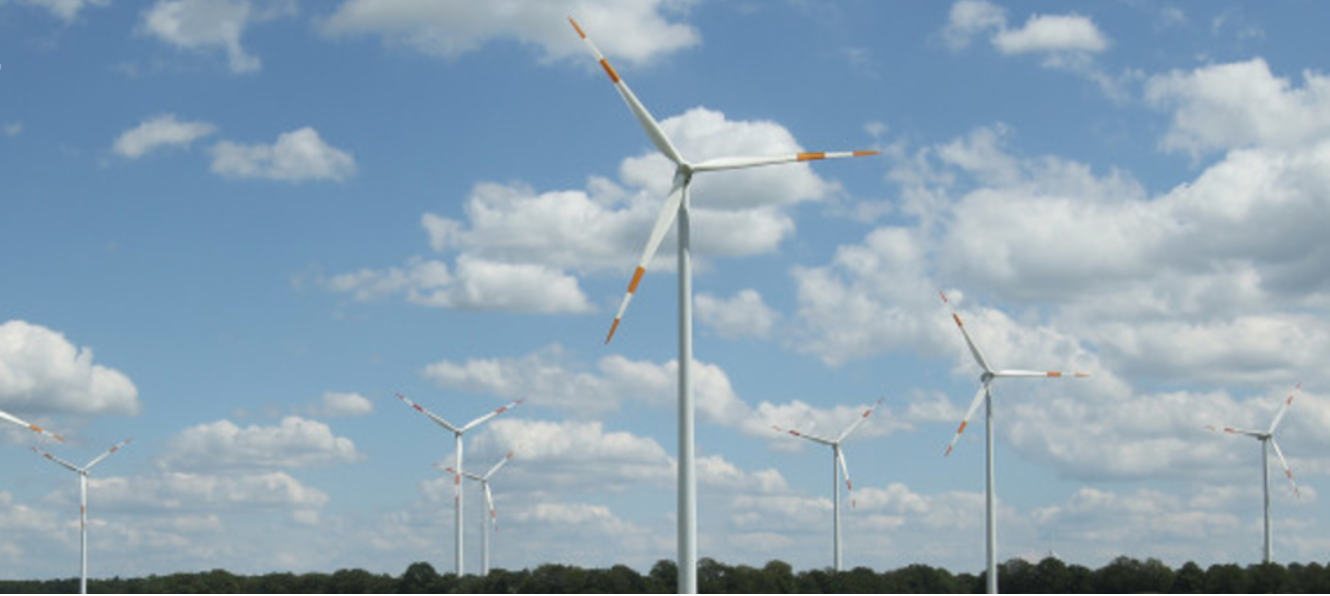
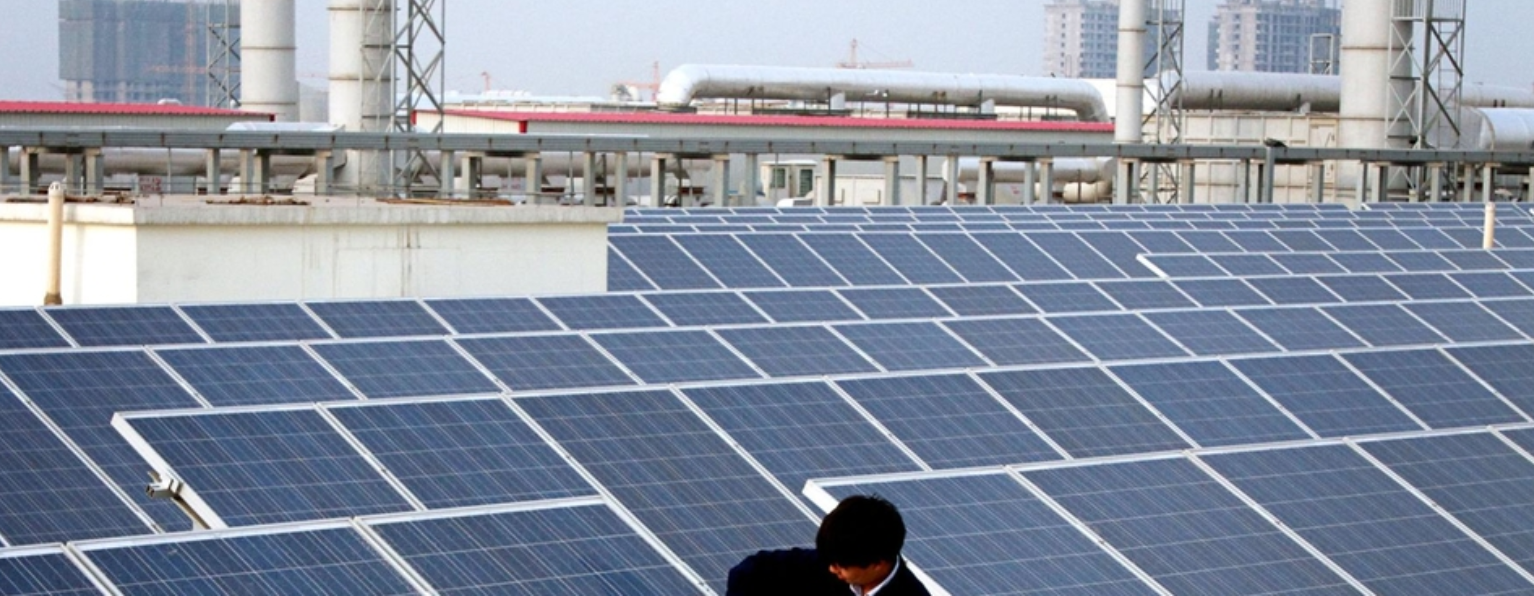






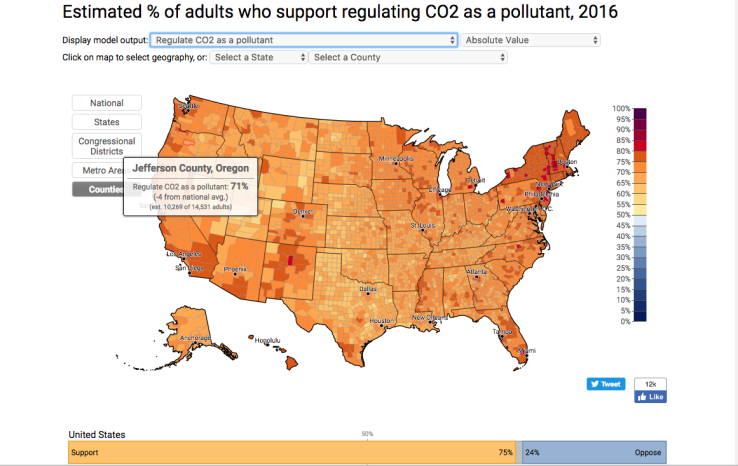
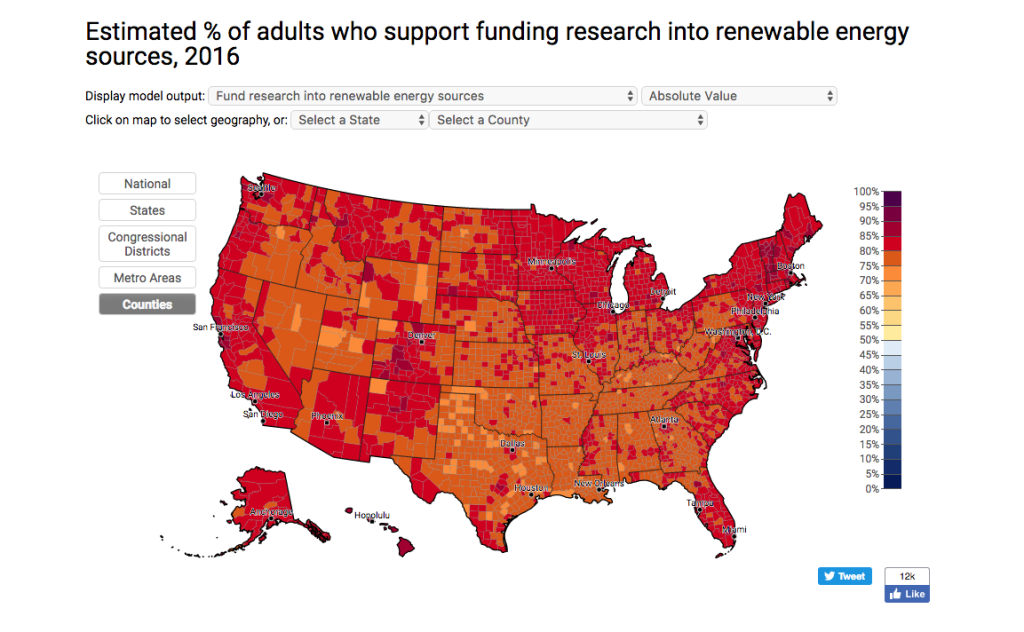


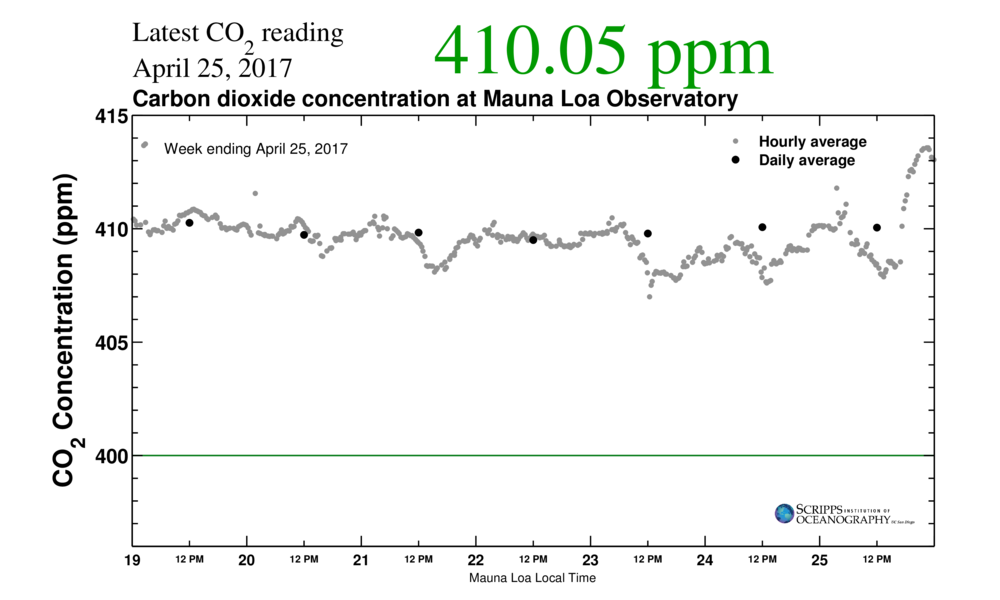
 RSS Feed
RSS Feed
